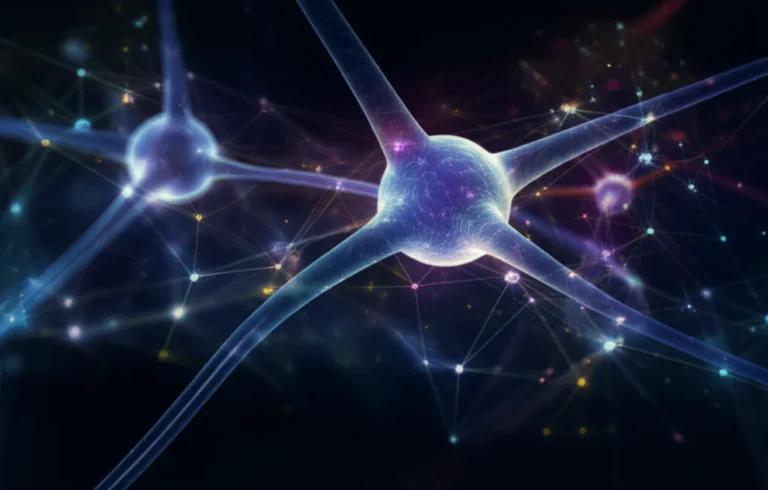Support our educational content for free when you purchase through links on our site. Learn more
What Are the 3 Types of Machine Learning? 🤖 (2025 Guide)
Machine learning is no longer just a buzzword—it’s the secret sauce behind everything from your favorite app’s recommendations to the smartest game AI that adapts to your every move. But what exactly are the 3 types of machine learning, and why should you, as a developer or tech enthusiast, care about them?
At Stack Interface™, we’ve seen firsthand how choosing the right type of machine learning can make or break a project. Whether you’re training a model to recognize images, clustering users by behavior, or building a game bot that learns on the fly, understanding these core types is essential. And spoiler alert: there’s more than just the classic three! Later, we’ll also explore emerging paradigms like semi-supervised and self-supervised learning that are reshaping the AI landscape.
Curious how these types power real-world apps and games? Or wondering which one fits your next project? Keep reading—we’ll break down each type with developer-tested insights, practical examples, and tips to get you started.
Key Takeaways
- Supervised learning uses labeled data to predict or classify with high accuracy—perfect for tasks like spam detection or image recognition.
- Unsupervised learning uncovers hidden patterns in unlabeled data, ideal for customer segmentation and anomaly detection.
- Reinforcement learning learns through rewards and penalties, powering adaptive game AI and robotics.
- Emerging types like semi-supervised and self-supervised learning help overcome data labeling challenges and boost model performance.
- Platforms like IBM watsonx.ai streamline managing and deploying diverse machine learning models at scale.
Ready to unlock the full potential of machine learning? Let’s dive in!
Table of Contents
- ⚡️ Quick Tips and Facts About Machine Learning Types
- 🤖 Demystifying Machine Learning: What Is It and Why It Matters
- 📜 The Evolution of Machine Learning: A Brief History and Key Milestones
- 🔍 Understanding the 3 Core Types of Machine Learning
- 🌟 Beyond the Basics: Exploring Additional Machine Learning Paradigms
- 🛠️ Real-World Applications: How Different Machine Learning Types Power Innovation
- ⚙️ Managing and Deploying Machine Learning Models at Scale with watsonx.ai
- 📚 Essential Resources and Tools for Mastering Machine Learning Types
- 🔗 Related AI and Machine Learning Solutions Worth Exploring
- 🎯 Conclusion: Choosing the Right Machine Learning Type for Your Project
- 🔗 Recommended Links for Deepening Your Machine Learning Knowledge
- ❓ Frequently Asked Questions About Machine Learning Types
- 📑 Reference Links and Further Reading
⚡️ Quick Tips and Facts About Machine Learning Types
Welcome to the fascinating world of machine learning (ML)! If you’ve ever wondered what are the 3 types of machine learning and why they matter so much in app and game development, you’re in the right place. At Stack Interface™, we’ve been knee-deep in ML projects, so here’s a quick cheat sheet before we dive deeper:
- Supervised Learning ✅: Uses labeled data to teach models how to predict or classify. Think of it as a teacher grading homework with an answer key.
- Unsupervised Learning ✅: Works with unlabeled data to find hidden patterns or groupings—like a detective piecing together clues without a suspect list.
- Reinforcement Learning ✅: Learns by trial and error, optimizing actions based on rewards and penalties. Imagine training a dog with treats and timeouts.
Bonus types you’ll want to know:
- Semi-supervised learning (a hybrid approach)
- Self-supervised learning (machines teaching themselves)
- Deep learning (complex neural networks powering AI magic)
Why should you care? Because these types underpin everything from Netflix recommendations to autonomous vehicles and even your favorite game AI opponents! Curious how? Stick with us.
For a detailed primer on machine learning basics, check out our comprehensive guide on machine learning.
🤖 Demystifying Machine Learning: What Is It and Why It Matters
Machine learning is like giving your computer a brain—but without the messy biology. It’s a subset of artificial intelligence where computers learn from data and improve over time without being explicitly programmed for every task. Instead of writing rules, you feed the machine examples, and it figures out the patterns.
Why ML is a Game-Changer for Developers
- Automation: ML automates decision-making, freeing developers from hardcoding every scenario.
- Personalization: From apps to games, ML tailors experiences based on user behavior.
- Prediction: ML models forecast trends, user actions, or system failures before they happen.
- Adaptability: Models evolve as new data arrives, keeping your software sharp.
Our Take: ML in App & Game Development
We’ve used ML for everything from dynamic NPC behavior in games to smart recommendation engines in apps. The magic lies in choosing the right type of ML for your problem. For example, supervised learning is great for spam detection in chat apps, while reinforcement learning shines in training game AI to adapt to player strategies.
Want to geek out more? Dive into our AI in Software Development category for real-world developer stories.
📜 The Evolution of Machine Learning: A Brief History and Key Milestones

Machine learning didn’t just pop up overnight—it’s the result of decades of research, trial, and error.
Timeline Highlights
| Year | Milestone | Why It Matters |
|---|---|---|
| 1959 | Arthur Samuel coins “Machine Learning” | First formal definition of ML as “computers learning without explicit programming.” |
| 1980s | Development of Neural Networks | Inspired by human brain structure, enabling early deep learning concepts. |
| 1997 | IBM’s Deep Blue beats chess champion Kasparov | Showcased ML’s potential in complex decision-making. |
| 2012 | Breakthrough in Deep Learning (AlexNet) | Revolutionized image recognition with deep convolutional networks. |
| 2020s | Rise of Large Language Models (LLMs) like GPT-3 | Enabled natural language understanding and generation at scale. |
Why History Matters to You
Understanding ML’s roots helps developers appreciate the strengths and limitations of each type. For instance, early supervised learning thrived on labeled data, but now self-supervised and reinforcement learning are pushing boundaries in gaming AI and autonomous systems.
For a deeper dive, IBM’s Think article on ML types offers an excellent historical perspective.
🔍 Understanding the 3 Core Types of Machine Learning
Let’s get to the heart of the matter. The three main types of machine learning are the pillars of modern AI development. Each has unique characteristics, suited for different tasks.
1. Supervised Learning: Teaching Machines with Labeled Data
Supervised learning is the classic “teacher-student” model. You provide the algorithm with input-output pairs (labeled data), and it learns to map inputs to correct outputs.
How It Works Step-by-Step
- Collect labeled data: For example, images tagged as “cat” or “dog.”
- Choose an algorithm: Options include decision trees, support vector machines (SVM), or neural networks.
- Train the model: The algorithm learns patterns linking inputs to labels.
- Validate and test: Evaluate performance on unseen data to avoid overfitting.
- Deploy: Use the model to predict labels on new, unlabeled data.
Real-World Examples
- Spam email detection
- Credit risk scoring
- Image recognition in apps like Google Photos
- Predicting equipment failure in IoT devices
Pros and Cons
| Pros | Cons |
|---|---|
| High accuracy with quality labeled data | Requires large labeled datasets (costly/time-consuming) |
| Easier to interpret and debug | Can’t handle unlabeled data |
| Well-established algorithms and tooling | Risk of bias if training data is skewed |
Developer’s Anecdote
We once built a supervised learning model to classify user feedback into categories for a mobile app. The challenge? Getting enough labeled data. We crowdsourced labeling, which improved accuracy dramatically—proving data quality beats quantity.
2. Unsupervised Learning: Discovering Hidden Patterns Without Labels
Unsupervised learning is the rebel of ML: no labels, no teachers, just raw data. The goal? Find structure or patterns in the data.
How It Works Step-by-Step
- Gather unlabeled data: For example, user behavior logs without predefined categories.
- Select an algorithm: K-means clustering, hierarchical clustering, or principal component analysis (PCA).
- Run the algorithm: It groups or reduces data dimensions based on similarities.
- Interpret results: Humans analyze clusters or patterns to derive insights.
Real-World Examples
- Customer segmentation in marketing
- Anomaly detection in cybersecurity
- Market basket analysis (“people who bought X also bought Y”)
- Organizing large document collections
Pros and Cons
| Pros | Cons |
|---|---|
| No need for labeled data | Results can be hard to interpret |
| Useful for exploratory data analysis | May find patterns that aren’t meaningful |
| Can reveal unknown insights | Requires domain expertise to analyze clusters |
Developer’s Anecdote
In a game development project, we used unsupervised learning to cluster player behavior. This helped us identify distinct player types—casual, competitive, social—which informed targeted game balancing and marketing strategies.
3. Reinforcement Learning: Learning by Trial, Error, and Rewards
Reinforcement learning (RL) is like training a puppy: actions lead to rewards or penalties, and the agent learns to maximize positive outcomes.
How It Works Step-by-Step
- Define the environment: The world where the agent operates (e.g., a game).
- Specify actions: What the agent can do.
- Set rewards: Positive or negative feedback based on actions.
- Train the agent: Through trial and error, the agent learns policies to maximize cumulative reward.
- Evaluate and refine: Test agent behavior and adjust parameters.
Real-World Examples
- Game AI that adapts to player strategies
- Robotics (e.g., teaching robots to walk)
- Autonomous vehicles learning to navigate
- Dynamic pricing algorithms
Pros and Cons
| Pros | Cons |
|---|---|
| Learns complex behaviors from interaction | Requires lots of computational resources |
| Can handle sequential decision-making | Training can be unstable and slow |
| Mimics human learning processes | Harder to interpret and debug |
Developer’s Anecdote
We experimented with RL to create a game bot that learns from player moves. Initially, it made silly mistakes (like walking into walls!), but over time it developed clever strategies that surprised even our QA testers.
🌟 Beyond the Basics: Exploring Additional Machine Learning Paradigms
The ML universe is vast! Beyond the classic three types, some emerging paradigms are reshaping the landscape.
Semi-Supervised Learning: The Best of Both Worlds
Semi-supervised learning uses a small amount of labeled data combined with a large pool of unlabeled data. This approach is a cost-effective compromise when labeling is expensive.
- Use case: Medical imaging, where expert labeling is costly but unlabeled scans are abundant.
- Example algorithms: Generative Adversarial Networks (GANs), self-training methods.
Self-Supervised Learning: Machines Teaching Themselves
Self-supervised learning is a clever twist where the machine generates its own labels from the data. It’s especially powerful in natural language processing (NLP) and computer vision.
- Example: Predicting missing words in sentences (used in models like BERT).
- Benefit: Reduces reliance on labeled datasets, enabling training on massive data.
Deep Learning: The Powerhouse Behind Complex AI
Deep learning uses multi-layered neural networks to model complex patterns. It’s a subset of supervised, unsupervised, or reinforcement learning but deserves a spotlight for its impact.
- Applications: Voice assistants (Siri, Alexa), image recognition, autonomous driving.
- Tools: TensorFlow, PyTorch, Keras.
🛠️ Real-World Applications: How Different Machine Learning Types Power Innovation
Let’s connect theory to practice. Here’s how the 3 core ML types fuel innovation across industries:
| ML Type | Industry Example | Application | Impact |
|---|---|---|---|
| Supervised | Finance | Fraud detection | Reduced financial losses |
| Unsupervised | Retail | Customer segmentation | Personalized marketing |
| Reinforcement | Gaming | Adaptive AI opponents | Enhanced player engagement |
| Semi-Supervised | Healthcare | Disease diagnosis from limited labeled data | Faster, cost-effective diagnostics |
| Self-Supervised | NLP | Language translation | Improved accuracy with less data |
| Deep Learning | Autonomous Vehicles | Object detection and decision-making | Safer self-driving cars |
⚙️ Managing and Deploying Machine Learning Models at Scale with watsonx.ai
If you’re a developer or data scientist looking to manage multiple ML models efficiently, IBM’s watsonx.ai platform is a game-changer.
What Is watsonx.ai?
A comprehensive AI studio that helps you:
- Train, validate, and tune ML models with less data
- Deploy models seamlessly in production environments
- Monitor model performance and mitigate bias
- Collaborate across teams with integrated tools
Why We Recommend It
- Ease of use: Intuitive UI and automation reduce manual tuning.
- Scalability: Supports everything from small apps to enterprise-grade AI.
- Integration: Works well with popular frameworks like TensorFlow and PyTorch.
- Bias mitigation: Built-in tools to detect and reduce model bias, a critical challenge in ML.
Developer Tip
We integrated watsonx.ai into a recent project involving multiple supervised and reinforcement learning models. The platform’s model governance features saved us hours in compliance checks and performance tracking.
👉 CHECK PRICE on:
- IBM watsonx.ai: Amazon | IBM Official Website
📚 Essential Resources and Tools for Mastering Machine Learning Types
Ready to level up your ML skills? Here’s a curated list of resources from our dev team’s toolkit:
Online Courses & Certifications
- Machine Learning by Andrew Ng (Coursera): The gold standard for beginners.
- Deep Learning Specialization (DeepLearning.AI): For diving into neural networks.
- Reinforcement Learning Specialization (University of Alberta): Master RL concepts.
Books
- Hands-On Machine Learning with Scikit-Learn, Keras, and TensorFlow by Aurélien Géron
- Pattern Recognition and Machine Learning by Christopher Bishop
- Reinforcement Learning: An Introduction by Sutton and Barto
Tools & Frameworks
| Tool/Framework | Best For | Notes |
|---|---|---|
| TensorFlow | Deep learning & general ML | Backed by Google, huge community |
| PyTorch | Research & production | Preferred for dynamic graphs |
| Scikit-learn | Classical ML algorithms | Great for supervised/unsupervised |
| OpenAI Gym | Reinforcement learning environments | Simulated training playgrounds |
Communities & Forums
- Stack Overflow ML tag
- Reddit r/MachineLearning
- Kaggle competitions for hands-on practice
For more developer-centric tips, explore our Coding Best Practices category.
🔗 Related AI and Machine Learning Solutions Worth Exploring
Machine learning doesn’t exist in a vacuum. Here are some related AI solutions and platforms that complement or extend ML capabilities:
- Google AI Platform: End-to-end ML lifecycle management with strong cloud integration.
- Microsoft Azure Machine Learning: Enterprise-grade ML with AutoML and MLOps tools.
- Amazon SageMaker: Scalable ML model building and deployment on AWS.
- Hugging Face: State-of-the-art NLP models and datasets for transfer learning.
- OpenAI API: Access to powerful language models like GPT-4 for natural language tasks.
These platforms often support multiple ML types and provide developer-friendly SDKs and APIs.
If you prefer learning by watching, the first YouTube video embedded in this article offers a clear and concise comparison of supervised, unsupervised, and reinforcement learning. It breaks down algorithms, training methods, and real-world applications with engaging visuals—perfect for developers who want a quick refresher or a different perspective.
Stay tuned for the conclusion, where we’ll help you decide which machine learning type fits your next project like a glove!
🎯 Conclusion: Choosing the Right Machine Learning Type for Your Project

So, what have we learned on this whirlwind tour of machine learning types? Whether you’re building the next killer app or crafting immersive game AI, understanding the 3 core types of machine learning—supervised, unsupervised, and reinforcement learning—is your secret weapon. Each type has its strengths and quirks:
- Supervised learning is your go-to for problems where labeled data is available and accuracy is key. It’s reliable, interpretable, and widely supported by tools and frameworks.
- Unsupervised learning shines when you’re exploring unknown data landscapes or want to discover hidden patterns without predefined labels. It’s perfect for clustering users or detecting anomalies.
- Reinforcement learning is the adventurous learner, ideal for dynamic environments like games or robotics where trial-and-error and long-term strategy matter.
We also peeked beyond the basics at semi-supervised, self-supervised, and deep learning techniques, which are increasingly important in cutting-edge AI projects.
If you’re managing multiple ML models or want to streamline your AI development lifecycle, IBM’s watsonx.ai platform offers a robust, scalable solution with powerful tools for training, tuning, and deploying models efficiently. Our experience with watsonx.ai confirms it’s a solid choice for developers seeking enterprise-grade capabilities without drowning in complexity.
In short: Choose your ML type based on your data, problem complexity, and resource availability. Don’t hesitate to combine approaches for complex projects. And leverage platforms like watsonx.ai to accelerate your development and maintain model quality.
Remember the question we teased at the start—how do these types power your favorite apps and games? Now you know: from spam filters to adaptive NPCs, machine learning is the invisible engine driving smarter, more personalized, and engaging digital experiences.
Ready to get your hands dirty? The resources and tools we shared will help you master these ML types and build AI-powered solutions that stand out.
🔗 Recommended Links for Deepening Your Machine Learning Knowledge
👉 Shop essential ML books on Amazon:
- Hands-On Machine Learning with Scikit-Learn, Keras, and TensorFlow by Aurélien Géron: Amazon
- Pattern Recognition and Machine Learning by Christopher Bishop: Amazon
- Reinforcement Learning: An Introduction by Richard S. Sutton and Andrew G. Barto: Amazon
Explore IBM watsonx.ai:
❓ Frequently Asked Questions About Machine Learning Types
What are the three main processes of machine learning?
Machine learning typically involves data collection and preprocessing, model training, and evaluation/deployment. First, you gather and clean data to ensure quality. Then, you train your model using algorithms suited to your problem. Finally, you evaluate the model’s performance on unseen data and deploy it into production. This cycle often repeats as new data arrives.
What are the three types of learning-based approaches?
The three primary learning approaches are:
- Supervised learning: Learning from labeled data.
- Unsupervised learning: Discovering patterns in unlabeled data.
- Reinforcement learning: Learning optimal actions through rewards and penalties.
Each approach suits different problem domains and data availability.
What are the 3 key steps in machine learning?
The core steps are:
- Data preparation: Cleaning and formatting data for training.
- Model training: Feeding data into algorithms to learn patterns.
- Model evaluation and tuning: Testing accuracy and adjusting parameters for better performance.
What are the three areas of machine learning?
These areas correspond to the types of learning:
- Supervised learning focuses on prediction and classification.
- Unsupervised learning emphasizes clustering and association.
- Reinforcement learning targets sequential decision-making and control.
What are the 3 C’s of machine learning?
The 3 C’s often refer to Collect, Clean, and Compute:
- Collect: Gather relevant data.
- Clean: Remove noise and inconsistencies.
- Compute: Apply algorithms to extract insights.
What are the differences between supervised, unsupervised, and reinforcement learning?
| Aspect | Supervised Learning | Unsupervised Learning | Reinforcement Learning |
|---|---|---|---|
| Data | Labeled | Unlabeled | Environment feedback (rewards/penalties) |
| Goal | Predict outcomes or classify | Find hidden patterns | Learn optimal actions |
| Example Algorithms | Decision Trees, SVM, Neural Networks | K-means, PCA, Hierarchical Clustering | Q-learning, Deep Q Networks |
| Interpretability | Generally high | Moderate | Often low |
| Use Cases | Spam detection, image recognition | Customer segmentation, anomaly detection | Game AI, robotics |
How is machine learning used in app development?
ML enhances apps by enabling personalization, predictive analytics, natural language processing, and automation. For example, recommendation engines suggest products based on user behavior, while chatbots use NLP to understand queries. ML also powers fraud detection and image recognition features in apps.
Can game developers benefit from machine learning techniques?
Absolutely! ML helps create adaptive AI opponents, procedural content generation, and player behavior analysis. Reinforcement learning, in particular, allows game AI to learn strategies dynamically, making gameplay more challenging and engaging.
What are common algorithms in each type of machine learning?
- Supervised: Linear regression, logistic regression, support vector machines, random forests, neural networks.
- Unsupervised: K-means clustering, hierarchical clustering, Gaussian mixture models, PCA.
- Reinforcement: Q-learning, SARSA, Deep Q Networks, policy gradient methods.
How do you choose the right type of machine learning for a mobile app?
Consider:
- Data availability: Labeled data? Go supervised. Mostly unlabeled? Try unsupervised or semi-supervised.
- Problem type: Classification/prediction? Supervised. Pattern discovery? Unsupervised. Dynamic decision-making? Reinforcement.
- Resources: Reinforcement learning can be resource-intensive, so budget accordingly.
- Interpretability needs: Supervised models are generally easier to explain to stakeholders.
What role does reinforcement learning play in game AI development?
Reinforcement learning enables game AI to learn from player interactions, improving strategies over time without explicit programming. It’s used to create bots that adapt to player skill levels, optimize resource management, or even generate novel gameplay tactics.
How can machine learning improve user experience in apps and games?
ML personalizes content, predicts user needs, detects anomalies or fraud, and powers intelligent assistants. In games, it can tailor difficulty, generate content dynamically, and foster social interactions by analyzing player behavior.
📑 Reference Links and Further Reading
- IBM Think on Machine Learning Types: https://www.ibm.com/think/topics/machine-learning-types
- Coursera Article on Types of Machine Learning: https://www.coursera.org/articles/types-of-machine-learning
- Pecan AI Blog: Three Types of Machine Learning You Should Know | Pecan AI: https://www.pecan.ai/blog/3-types-of-machine-learning/
- IBM watsonx.ai Official Site: https://www.ibm.com/watsonx
- TensorFlow: https://www.tensorflow.org/
- PyTorch: https://pytorch.org/
- OpenAI: https://openai.com/
- Kaggle (Data Science Competitions): https://www.kaggle.com/
We hope this deep dive helps you confidently navigate the exciting world of machine learning. Ready to build smarter apps and games? Let’s get coding! 🚀





